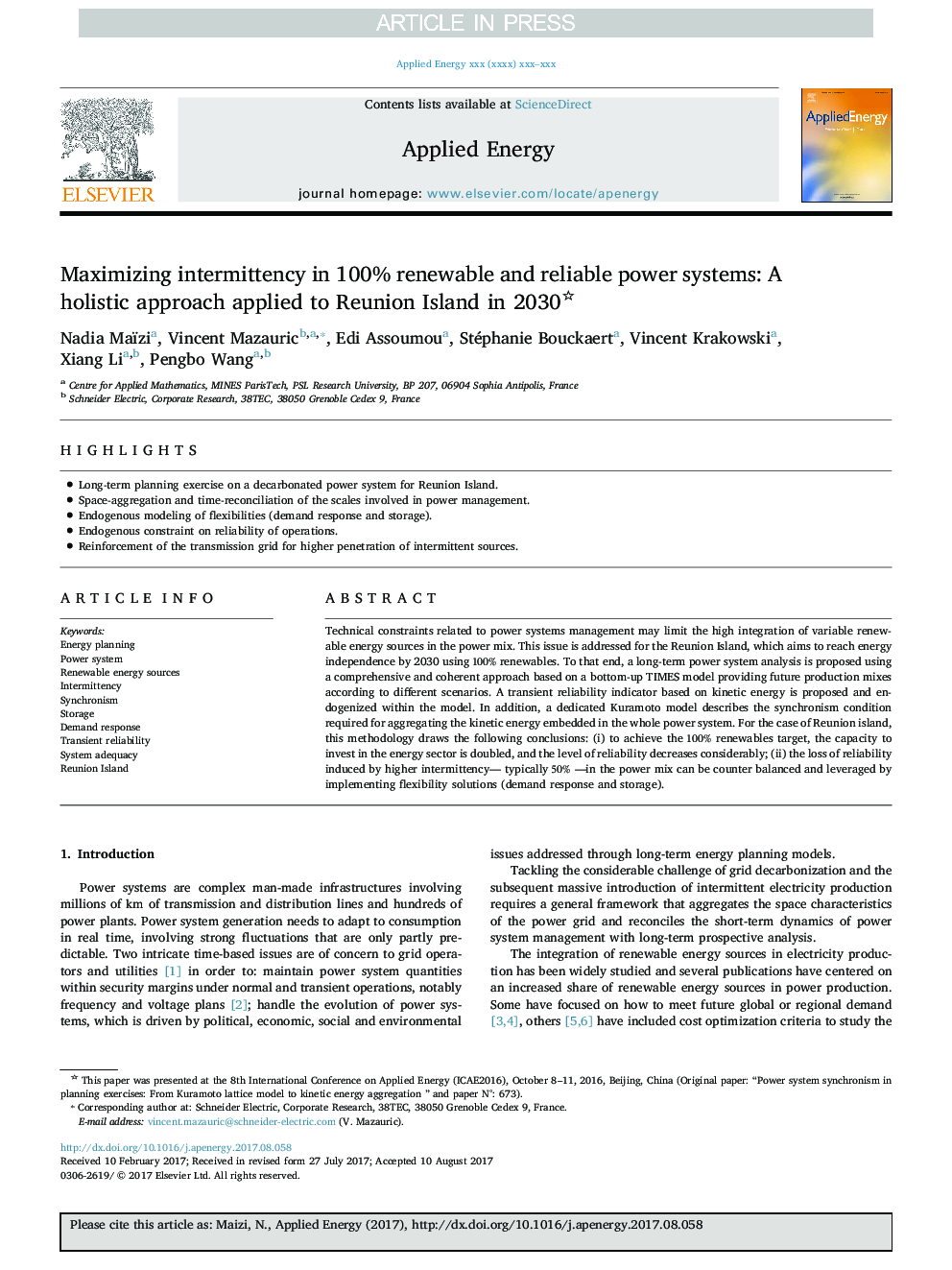| Article ID | Journal | Published Year | Pages | File Type |
|---|---|---|---|---|
| 8953454 | Applied Energy | 2018 | 10 Pages |
Abstract
Technical constraints related to power systems management may limit the high integration of variable renewable energy sources in the power mix. This issue is addressed for the Reunion Island, which aims to reach energy independence by 2030 using 100% renewables. To that end, a long-term power system analysis is proposed using a comprehensive and coherent approach based on a bottom-up TIMES model providing future production mixes according to different scenarios. A transient reliability indicator based on kinetic energy is proposed and endogenized within the model. In addition, a dedicated Kuramoto model describes the synchronism condition required for aggregating the kinetic energy embedded in the whole power system. For the case of Reunion island, this methodology draws the following conclusions: (i) to achieve the 100% renewables target, the capacity to invest in the energy sector is doubled, and the level of reliability decreases considerably; (ii) the loss of reliability induced by higher intermittency- typically 50% -in the power mix can be counter balanced and leveraged by implementing flexibility solutions (demand response and storage).
Keywords
Related Topics
Physical Sciences and Engineering
Energy
Energy Engineering and Power Technology
Authors
Nadia Maïzi, Vincent Mazauric, Edi Assoumou, Stéphanie Bouckaert, Vincent Krakowski, Xiang Li, Pengbo Wang,
